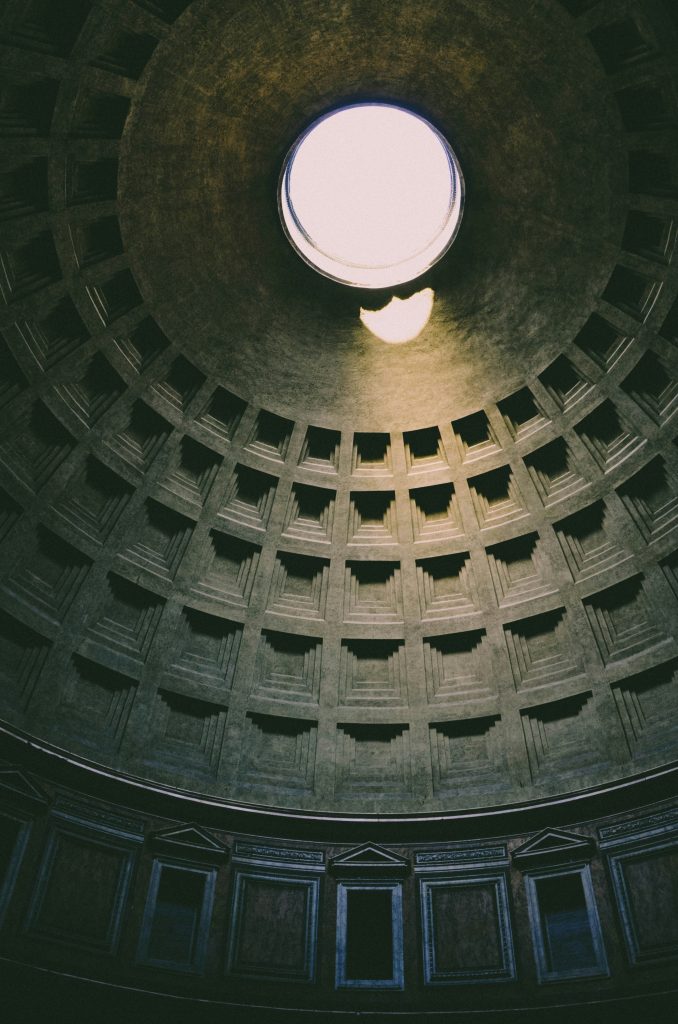Table of Contents
Architecture and Mathematics: The Closeness and the Difference
Architecture and mathematics are disciplines that have been closely intertwined throughout history, sharing a deep and symbiotic relationship. Both fields deal with form, structure, and space, yet they approach these concepts from different perspectives and with different purposes. This essay explores the closeness and differences between architecture and mathematics, shedding light on how these two fields intersect and diverge.

Photo by Unsplash
The Closeness: Shared Foundations and Mutual Influence
The closeness between architecture and mathematics is rooted in their shared foundations. Both disciplines rely on principles of geometry, proportion, and symmetry. From the ancient pyramids of Egypt to the Gothic cathedrals of Europe, mathematical principles have been employed to create structures that are not only functional but also aesthetically pleasing. The use of the Golden Ratio, for instance, is a prime example of how mathematics has influenced architectural design. This ratio, approximately 1.618, is considered aesthetically pleasing and has been used in the design of numerous buildings, from the Parthenon in Athens to Le Corbusier’s modernist designs.
Mathematics provides architects with the tools to create and manipulate forms, ensuring that structures are stable, functional, and harmonious. Geometry, in particular, plays a crucial role in architectural design. The study of shapes, sizes, and the properties of space is fundamental to creating buildings that are not only structurally sound but also visually appealing. The use of geometric principles allows architects to experiment with form and space, creating innovative designs that push the boundaries of what is possible in construction.
Moreover, mathematics is essential in the planning and execution phases of architecture. Calculations involving load-bearing capacities, the distribution of forces, and the optimization of materials are all rooted in mathematical principles. Without mathematics, the complex engineering feats that characterize much of modern architecture would be impossible. The ability to calculate stresses, strains, and other forces ensures that buildings can withstand the test of time and environmental challenges.
The relationship between architecture and mathematics is not one-sided; architecture has also influenced mathematics. The need to solve architectural problems has often led to advancements in mathematical theory. For instance, the construction of domes, arches, and other complex structures in the past has led to the development of new geometric theories and techniques. The study of perspective in Renaissance architecture, for example, contributed to the development of projective geometry, a branch of mathematics that deals with the properties of figures that are invariant under projection.
The Differences: Purpose and Perspective
Despite their closeness, architecture and mathematics differ fundamentally in their purposes and perspectives. Mathematics is an abstract discipline concerned with discovering universal truths through logical reasoning and proof. It deals with idealized forms and structures that exist in the realm of thought rather than in the physical world. Mathematicians seek to uncover the underlying principles that govern the universe, often without regard to practical application.
In contrast, architecture is a practical art form that involves the creation of physical spaces for human use. While it employs mathematical principles, its ultimate goal is not the pursuit of abstract truth but the creation of functional and meaningful environments. Architecture is concerned with how space is experienced, how it serves human needs, and how it contributes to the cultural and social context. Architects must balance technical considerations with aesthetic, cultural, and environmental factors, making architecture a multidisciplinary field that goes beyond pure mathematics.
Another key difference lies in the way both disciplines approach problem-solving. In mathematics, problems are often well-defined, with clear rules and a single correct solution. Mathematicians work within a framework of logic and rigor, where proofs are the ultimate arbiter of truth. In architecture, however, problems are often open-ended, with multiple possible solutions. Architects must navigate a complex web of constraints, including budget, materials, client needs, and environmental impact, to arrive at a design that meets all requirements. This requires a more holistic and iterative approach to problem-solving, where creativity and intuition play as much a role as technical expertise.
The Intersection: The Aesthetic and the Functional
The intersection of architecture and mathematics is perhaps most evident in the pursuit of harmony between the aesthetic and the functional. Both disciplines recognize that beauty and utility are not mutually exclusive but are, in fact, complementary. The ancient Roman architect Vitruvius famously articulated the idea that a building must have “firmness, commodity, and delight,” which can be interpreted as the structural integrity, functionality, and beauty of a design. Mathematics provides the tools to achieve firmness and functionality, while architecture brings the element of delight, infusing spaces with meaning and emotion.
In modern architecture, the relationship between mathematics and design has evolved further with the advent of computational design and parametric modeling. These technologies allow architects to explore complex forms and patterns that were previously unimaginable. Through the use of algorithms and mathematical models, architects can generate designs that are both structurally sound and visually striking. The fluid, organic forms of buildings like the Guggenheim Museum in Bilbao or the Sydney Opera House are testaments to the power of mathematics in shaping contemporary architectural aesthetics.
In conclusion, the relationship between architecture and mathematics is one of both closeness and difference. Mathematics provides the foundation for architectural design, offering the tools and principles needed to create structures that are both functional and beautiful. However, architecture transcends mathematics by bringing in human experience, cultural context, and creativity to create spaces that resonate on a deeper level. While mathematics seeks universal truths, architecture seeks to create meaningful environments, balancing the abstract with the tangible, the logical with the intuitive. Together, these disciplines create a dialogue that has shaped human civilization, producing some of the most iconic and enduring structures in history.


No responses yet